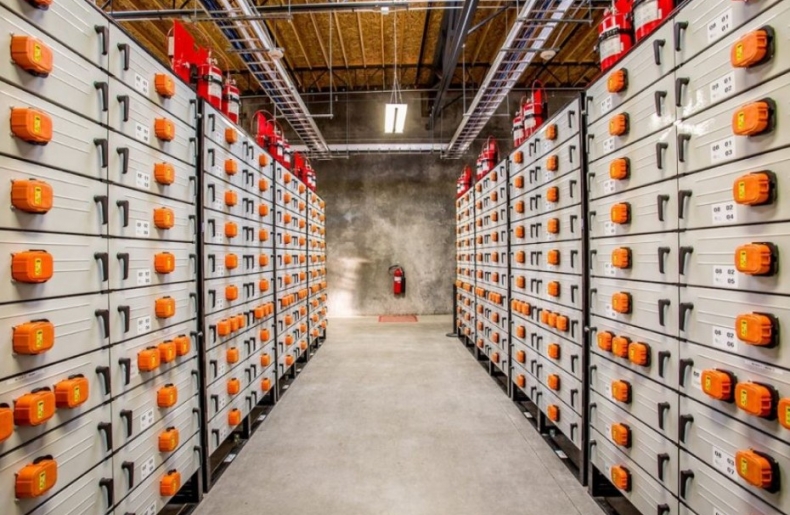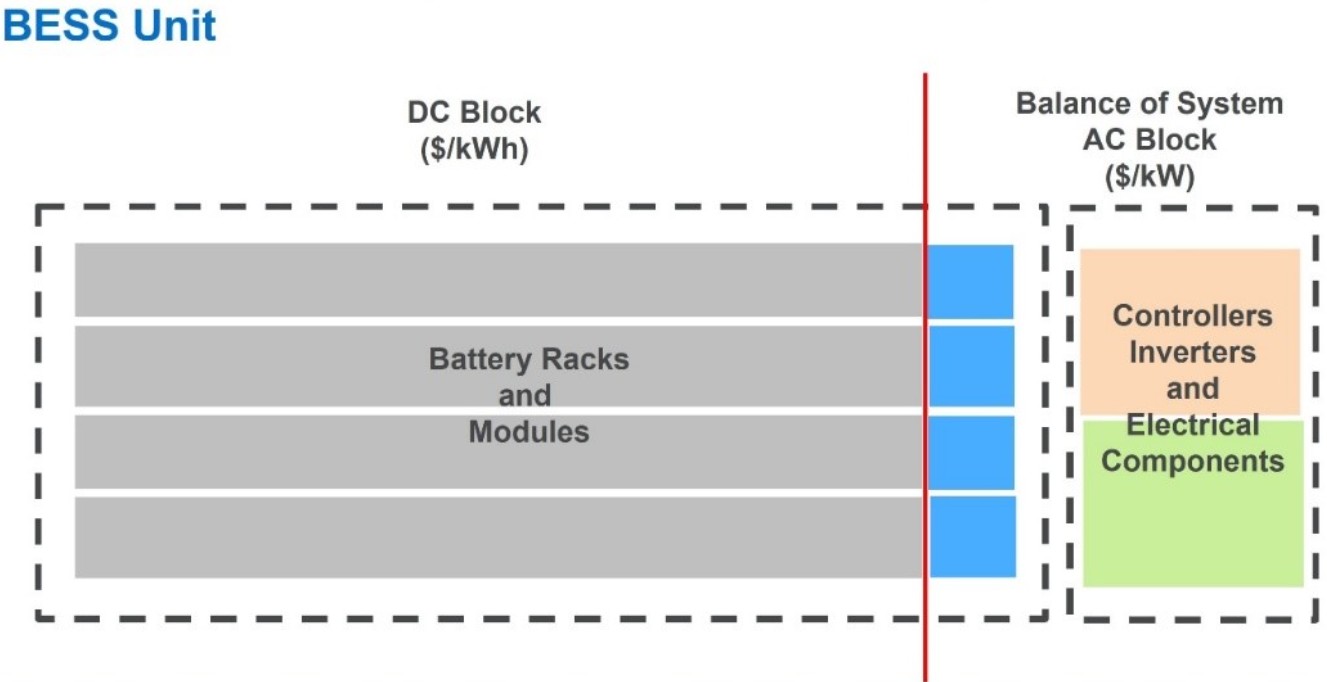Blogs
February 06, 2025Deeper decarbonization via battery energy storage systems

Global stakeholders across industry, governments, investors, lenders, and downstream customers have broadly endorsed targets for emissions reduction in the energy and chemicals industry. The primary focus is on swiftly deploying and integrating energy supply chains that produce zero greenhouse gas (GHG) and zero carbon emissions, ensuring a cleaner and more sustainable energy mix. In principle, any electricity load demand other than baseload duty, service, and supply comes at a higher cost because the systems and equipment to generate, transmit and deliver electricity are only utilized part-time. Typically, baseload is defined as the minimum amount of electric power delivered or required over a given timeframe at a steady rate. Baseload capacity consists of generating systems normally operated to serve loads on a 24/7 basis. The more variable or infrequent the load demand, the higher the cost. Given the growing volatility of energy supplies, a crucial global focus is on storing energy to balance supply and demand, a challenge that previously lacked technically feasible and economically viable solutions. Thus, energy storage is the only feasible technology available that can use energy generated during lower cost off-peak periods to serve demand loads during expensive peak periods, thereby improving the overall utilization and economics of the electric utility grid.
Battery energy storage system (BESS) units are essential since they enable the integration of intermittent and non-dispatchable renewable energy sources such as solar PV and wind into the grid by storing excess electricity generated during peak production periods and releasing it when demand is high. Accordingly, BESS units support stabilization of the grid, reduce reliance on fossil fuels, and provide backup power during outages, ultimately contributing to a more reliable and sustainable energy future. BESS units also offer cost savings by allowing end-users to take advantage of time-of-use pricing by storing energy during off-peak hours and using it during peak demand periods.
Continual Advances and Improvements
There is a rapidly changing technology landscape for BESS units. Along with decreased production costs, the leading battery chemistries and technologies include Li-Ion, flow batteries, and sodium sulfur batteries which have also improved significantly. This includes continual improvements with new chemistries boosting performance. The batteries themselves are more efficient and denser, meaning they can both be smaller in size and store an electric charge much longer in large-scale BESS units. Additional key battery cell technology advances for BESS units include cell longevity, enhanced duration, improved cycling, and managing degradation. Degradation reduces a battery's ability to store the electric charge and deliver power.
Researchers are continually improving battery materials to increase energy density and charge capacity. New emerging and promising battery (non-lithium) technologies such as solid state and graphene, as well as other embryonic battery designs are pushing the limits on performance by increasing energy density (more power in a smaller size), providing faster charging, and longer battery life. Newer battery technologies stand to potentially overtake conventional Li-ion battery technology between now and 2030+ for smaller-scale end-use applications.
Key Drivers for Deploying BESS Units
As noted, the shift from fossil fuel-based to electric power sources with zero GHG and zero-carbon emissions, such as solar PV and wind (and potentially baseload dispatchable commercial nuclear power), is propelling the growth of the BESS market. Furthermore, the increasing installations of BESS units in electric utility grid modernization projects worldwide along with growing investments in enhancing grid functionality, monetizing the “duck curve,” and transmission and distribution deferral, is further driving the BESS market.
With respect to grid stability, BESS units help balance supply and demand in the energy grid, which can reduce the risk of blackouts, brownouts, and service disruptions. BESS units can also react with fast response to changes in the electric utility grid's frequency and voltage thereby assist in restoring balance. In terms of flexibility, BESS units are modular, so additional containerized battery banks and blocks can be added incrementally to increase overall capacity. With increasing business use cases and applications, BESS units can be installed on a process plant, C&I facility, or manufacturing plant's premises (behind-the-meter) or directly connected to the power grid (front-of-the-meter). There are also fiscal and financial incentives as well as tax benefits available for BESS owners, such as the federal investment tax credits as well as state-level and local-level rebates.
Costs and Techno-Economics
In principle, the costs for a BESS unit depend on the power capacity and the energy capacity of the specific BESS plant or facility. Typically, the costs and techno-economics is divided into three main categories based on the nameplate duration of the BESS unit, which is the ratio of nameplate energy capacity to nameplate power capacity. Short-duration BESS units have a nameplate duration of less than 0.5 hours. Medium-duration units range from 0.5 to 2 hours, while long-duration units span from more than 2 hours up to 4 hours.
As a broad cost metric, the total installed cost of a BESS unit is parsed by the instantaneous output power rating of the overall power generation system. This is specified as $ per kW-AC (preferred) or $ per kW-DC. In general, the main cost elements of a large-scale BESS unit consist of the main plant equipment (e.g., battery modules in the DC block) and the balance of the system and also known as the balance of plant.
Strategic Implications and Next Steps
Key drivers for broader BESS market deployment include a strong regulatory framework and policy, innovation, addressing market gaps, and expanding market share. To achieve deeper market penetration, it is crucial to establish business use cases that are technically feasible, economically viable, and financially profitable. Strategic next steps for BESS units should include developing advanced battery technologies like solid-state batteries, enhancing electric utility grid integration, optimizing energy management systems, and exploring new applications in microgrids, EV charging, and demand response programs. These efforts aim to improve grid stability, reduce costs, and promote wider adoption of renewable energy sources. Additionally, it is important to assess technological advancements, grid integration and control systems, new applications and market expansion, and to strengthen policy and regulatory support.
Find out more...
TECH: Advances in Battery Energy Storage Systems
This Report highlights advances in BESS units which are growing in importance with continual technological improvements and declining costs of leading battery chemistries such as Li-Ion, vanadium redox, sodium-sulfur, and others. This includes improvements with new chemistries boosting performance. BESS units play an essential role via increased integration with power supply sources with zero-GHGs and zero-carbon emissions such as intermittent renewable power sources (e.g., solar PV and wind) and advances in dispatchable baseload commercial nuclear power (e.g., small modular reactors). This Report discusses the viable pathways for BESS units, evaluates the status of commercially advanced battery technologies and applications, and reviews the methodologies for determining the costs and techno-economics of BESS technologies, systems, and projects. The Report also provides detailed case studies along with an overview of technology types, their rated output, project status, siting and location, ownership, supply/value chain partners, cost, performance, benefits, and any other relevant data and information.
Author...
Pat Sonti, Senior Consultant
About Us: NexantECA, the Energy and Chemicals Advisory company is the leading advisor to the energy, refining, and chemical industries. Our clientele ranges from major oil and chemical companies, governments, investors, and financial institutions to regulators, development agencies, and law firms. Using a combination of business and technical expertise, with deep and broad understanding of markets, technologies, and economics, NexantECA provides solutions that our clients have relied upon for over 50 years.





